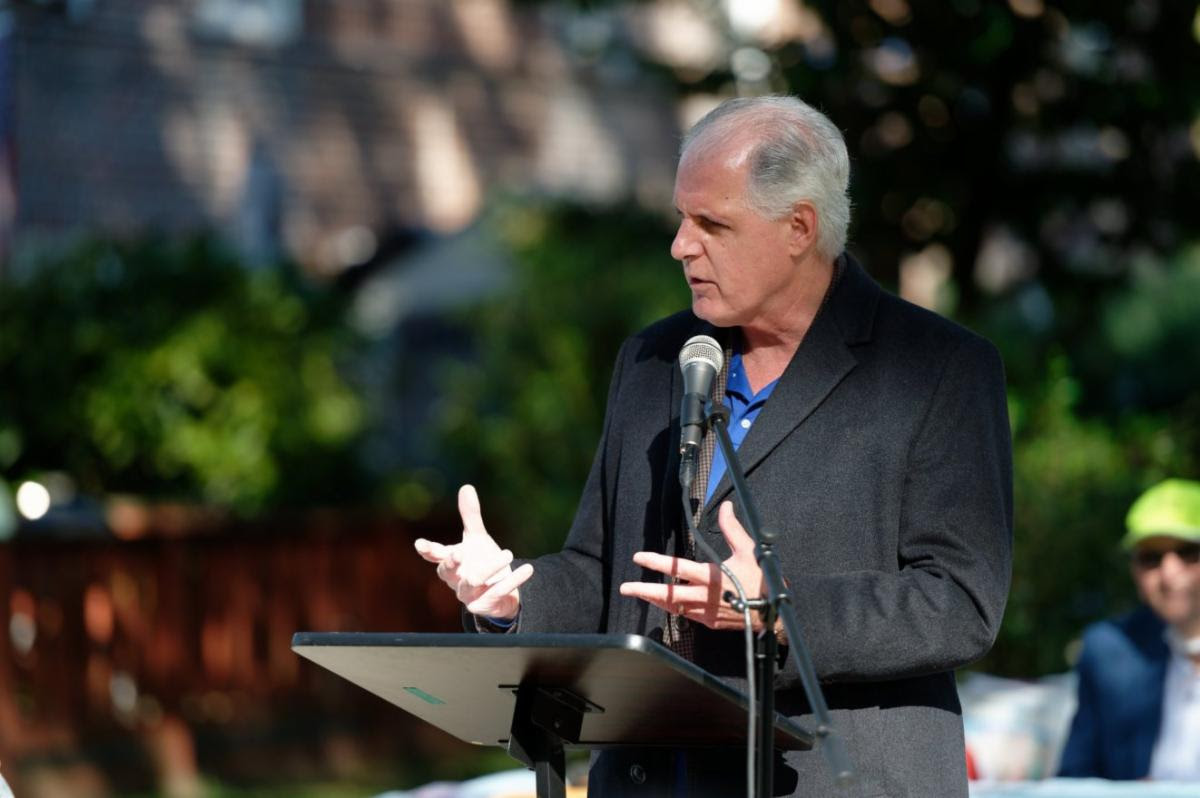Affordable housing in New York is a complex topic, but it’s something Mayor Bill de Blasio has spoken about quite often. He proposed a 10-year plan that has a number of proposals and reforms.
Two of the most talked about reforms are the Mandatory Inclusionary Housing program and the Zoning for Quality and Affordability plan, which passed the necessary vote in City Council in March.
Here is a breakdown of some of the goals and proposals of the mayor’s plan:
What is the goal of the plan?
De Blasio’s goal is to create and preserve 200,000 units of affordable housing throughout the five boroughs over 10 years. Of the 200,000, 60%, or 120,000, will be from preservation and 40%, or 80,000, will be new construction, according to the plan.
How does the city define affordable housing?
The city decides what is affordable based on a household’s percentage of the area median income. In 2015, the AMI for a family of four in New York City was $86,300. How much less or more your family’s income is than the AMI will determine your affordable monthly rent.
For example, if the income of a household of four falls in the 51% to 80% of AMI, that family would be considered “Low Income.” The city estimates that the income would be between $41,951 and $67,120 annually, and an affordable rent would be $1,050 to $1,678 each month. The mayor’s plan includes a chart showing the income levels and corresponding affordable rent on page 6.
Which income levels will benefit?
According to the plan, there will be affordable housing available for each level of income from “Extremely Low Income” to “Middle Income.” The middle group, “Low Income” will benefit the most, receiving nearly 60 percent of the 200,000 projected units. Each of the other levels of income will receive eight to 12 percent of the units. A chart on page 11 of the plan shows this breakdown.
What is the cost of the plan and how will it be funded?
The plan will cost $41.4 billion. It will receive funding from the city, state and federal government. One of the areas highlighted in the report is the plan to strengthen tax incentives to invest in affordable housing.
“The City has a set of tax exemptions and abatements to promote the development of market-rate housing as well as the development and maintenance of affordable housing,” the report reads. “Over time, some of these tax benefit programs have become inconsistent and overly complex.” One of the tax incentives under review is the 421-a tax exemption program, which exempts property taxes based on the location, use and met requirements for affordable housing.
What does Mandatory Inclusionary Housing mean?
The Mandatory Inclusionary Housing program will require new housing in rezoned areas to include a certain percentage of permanent affordable housing units in any new building. This means, when the City Planning Commission and City Council approve the rezoning of a neighborhood or building (for example, to add more stories to a building), they will determine the required percentage of affordable units in the new housing.
They can choose between the following options, or they can require both:
-25% of the building’s units set aside for households that fall in the 60% area median income
-30% of units set aside for households that fall in the 80% area median income
They also have the option to add one or both of the following requirements:
-20% of units set aside for households that fall in the 40% area median income
-30% of units set aside for households that fall in the 115% area median income, with 5% required for households in the 70% area median income and 5% for households in the 90% area median income
What is the Zoning for Quality and Affordability plan?
The Zoning for Quality and Affordability plan will change the city’s zoning regulations. The changes include allowing additional stories to be built on certain buildings and reducing the current requirements for parking lots. The changes are intended to make more space available to be used for affordable and senior housing.
A list of the changes in maximum building heights and a map of the adjusted parking requirements are shown on a fact sheet about the plan.
Where will this all start?
East New York, Brooklyn, is the first neighborhood to be rezoned under Mandatory Inclusionary Housing program and Zoning for Quality and Affordability plan. In April, City Council approved these proposals with some adjustments, allowing the rezoning to proceed in this neighborhood. The plan for East New York also includes building a primary and intermediate school, creating pedestrian-friendly streets and creating incentives for business growth within the neighborhood.
The Housing New York plan will focus on a number of other neighborhoods, which are listed and explained on the Department of City Planning website.
How do you know if you are eligible for affordable housing?
Different developments have different eligibility requirements. You can search the options available on nyc.gov/housingconnect, and determine if you are eligible. Eligibility depends on your household income, the number of people in your household and your credit history, among other factors.
How do you apply for affordable housing?
You can apply at nyc.gov/housingconnect by creating an account and filling out an online application or calling 311.
Applications can take two to 10 months after the deadline to process, and they are selected through a lottery system. If your application is selected and you meet the eligibility requirements, you will be invited to an interview with the developer. During the interview, you have to present a number of documents including a copy of your current lease or letter from your landlord and copies of your recent rent checks and bills. A full list of the required documents is available on the website.
After the interview you will either be confirmed or denied housing. If you are rejected, you can appeal or apply to another development.


































